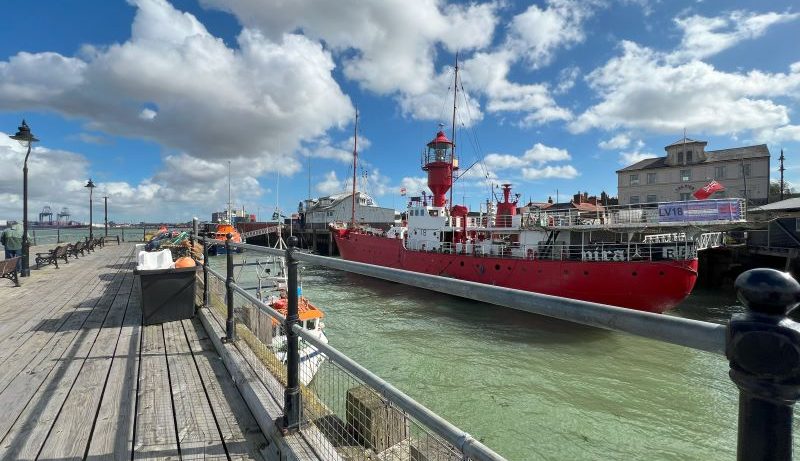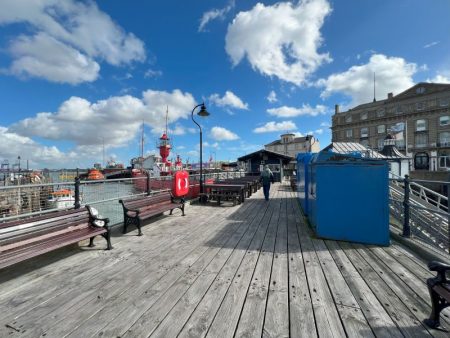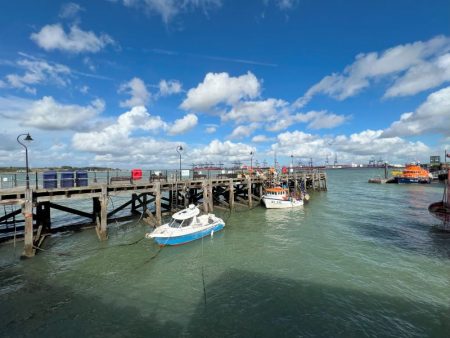The town of Harwich in Essex takes its name from the Old English words here + wic meaning ‘Army-dwelling’ after a Danish army reportedly camped on the site sometime in the 9th century. However, the Domesday Book makes no mention of the town which means that if there was anyone residing in the area shortly after the Norman invasion in 1066 it must have been an incredibly small number. Neighbouring Dovercourt does appear though to have a population of about 120 peasants farming the land and residing in simple timber shelters. Nevertheless, Harwich began to grow during the Middle Ages thanks to its geography. Positioned on the estuaries of the Stour and Orwell Rivers and in a location of strength between the Thames and the Humber, Harwich became a significant North Sea port for both civil and military maritime ventures.
The town pre-1500
The first significant reference to the region is a battle at the mouth of the River Stour in AD 885. The Anglo-Saxon Chronicle (‘E’ Manuscript) tells us that:
“King Alfred sent a raiding ship-army from Kent into East Anglia. Immediately the came to the mouth of the Stour, then they met 16 ships of Vikings and fought against them, and got at all the ships, and killed the men. Then when they were on their way home with the war-booty, they met a great raiding ship-army of Vikings, and fought against them the same day, and the Danish had the victory.”
It may be that the Viking party that was present on the Stour had sailed out of the settlement that gave Harwich its name but there is unfortunately no way to know for sure. What we do know is that Harwich does not reappear on record until the late 12th century when a church was constructed in 1177.
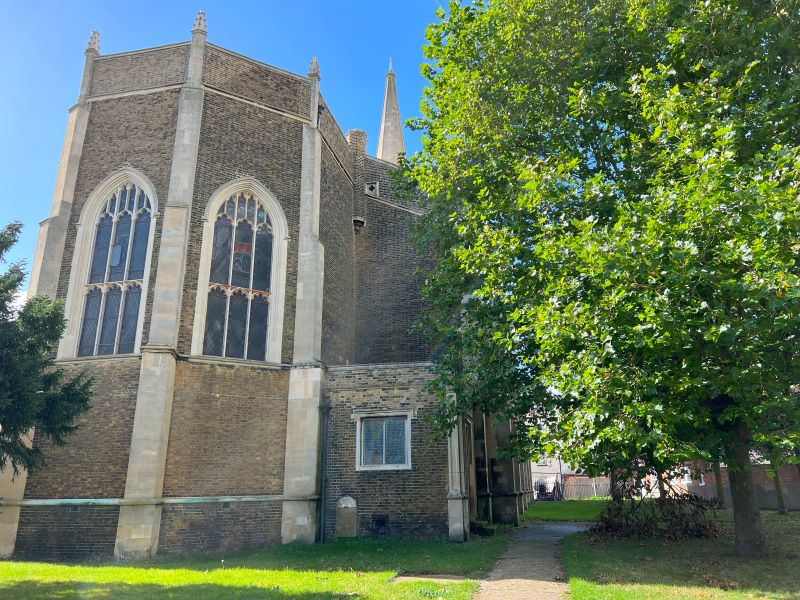
The Chappele of Herewyche was founded on the site of the current St Nicholas Church by the 1st Earl of Norfolk, Roger Bigod. The need for a church probably reflects the growing number of people using Harwich’s natural harbour to offload goods from larger ships on the Stour and
Source: Youtube eyeinthesky
By 1238, the port hamlet had grown to such a size via trade with the continent that it was granted a royal charter to become one of many new towns that were being created across England at this time. Yet, the new town of Harwich did not stop there, through the continued involvement of the Norfolk Earls Harwich became evermore important to the English economy. The 4th Earl, also a Roger Bigod, started a weekly market which attracted many eager craftsmen and merchants who were encouraged to settle in the town. This necessitated the creation of streets, shops, houses and most importantly jetties.
From this point forward Harwich expanded quickly, receiving a renewed charter in 1318 from King Edward II. This was a big deal in the Middle Ages as a royal charter granted townspeople special rights, particularly at court. With such favour and growing populace Harwich became one of the primary hubs of English trade. The top exports included wool and hay bales while expensive wines were imported from France and the Italian states for the tables of English lords and ladies. But the port had many strategic military benefits too. Although, it was not always the native English who used this to their own advantage.
For example, in 1326 when Harwich was a civil maritime hub Queen Isabella landed a rebellious army of some 2,750 soldiers to seize the throne of England from her husband Edward II. Later, when Isabella herself was removed from power by her son Edward III many years of fighting against the French ensued during which Harwich played an important role for Edward’s navy. In 1338 Edward sailed out of Harwich with a fleet of 500 ships in his first expedition to France. A year later in 1339 the French noting its importance to the English naval might tried unsuccessfully to set Harwich alight. Shortly after that in 1340 Edward sailed once more out of Harwich to intercept 400 French ships at Sluys. The English won a fantastic victory in what would be the first of many sea battles during the Hundred Years’ War.
The Early Modern Period (1500-1700)
The advent of artillery required the evolution of coastal defences, and the port of Harwich was no different. Henry VIII visited Harwich in 1543 and ordered the construction of three Device Forts. Device Forts were a series of artillery fortifications built in response to the threat of invasion by the French and Spanish during the 16th century and consisted anywhere from large stone castles to smaller blockhouses from which defensive gun positions could be taken up. At Harwich it was the blockhouse kind that were constructed, three in total, at Tower House, Middle House and House-upon-the-Hill. These structures were manned for just ten years, briefly revived in 1588 due to the threat of the Spanish Armada then abandoned once more.
In 1620, the Mayflower famously sailed from Plymouth to America carrying 132 pilgrims, but the ship finds its origins in Harwich. The Mayflower is believed to have been constructed sometime before 1600 in the town shipyards, and was captained by Christopher Jones, whose home still stands today on King’s Head Street, Harwich. To mark the 400th anniversary of the voyage a Mayflower Trail was designed for the historic town and offers an enjoyable tour around Harwich whilst simultaneously learning more about the founding of modern America.

The Dutch attack on Harwich, July 1667
(Public Domain: Artist – Willem van der Velde the Elder [1611-1693])
War at sea ramped up once more in the 17th century and royal attention turned once more to the defence of the important port of Harwich. King James I ordered the construction of the square Langer Fort with bulwarks at each corner outside Felixstowe to protect the waterways into Harwich. This proved a wise move when a Spanish fleet appeared off Harwich in 1625 causing considerable panic but soon calmed when the coastal defences warded them off. The town itself was then fortified in 1666 against the Dutch. Several naval engagements occurred off Harwich between the English and Dutch during the reign of Charles II, some of which were so close that they could be seen by the townspeople from the cliff edge.
The most threatening was the attack by Dutch Admiral Michiel de Ruyter who landed at Felixstowe with 2,000 men with intent to take Langer Fort, now referred to as Landguard Fort, and move onto Harwich. Yet, the Dutch were forced back to the sea by commanding officer Nathaniel Darrel and the garrison of 400 riflemen of the Duke of York & Albany’s Maritime Regiment, 100 artillerymen and 54 artillery pieces. The site of this battle is still in existence today and is open to the public. A must see for naval history buffs!
Another interesting attraction of Harwich from around the same time is the unique naval Treadwheel Crane. Built in 1667 at the old Naval Yard, Harwich boasts the only British example of a two-wheel man operated treadwheel crane. Situated on Harwich Green since 1932, visitors can admire this interesting piece of engineering that was used to lift naval stores by having two men walk within the interior of the wheels to raise and lower the crane hook.

1700 to the 20th Century…
The industrial age brought with it wealth as well as advancements in technology, architecture and of course warfare. In 1761, the bustling port of Harwich was chosen as the landing spot for Princess Charlotte of Mecklenburg-Strelitz on her way to wed to George III, an arrival marked with pomp and celebration. In 1769, a council chambers more fitting of Harwich’s status, The Guildhall, was constructed on the site of its former meeting place the Bear Inn, which had played host to the town council from 1673.
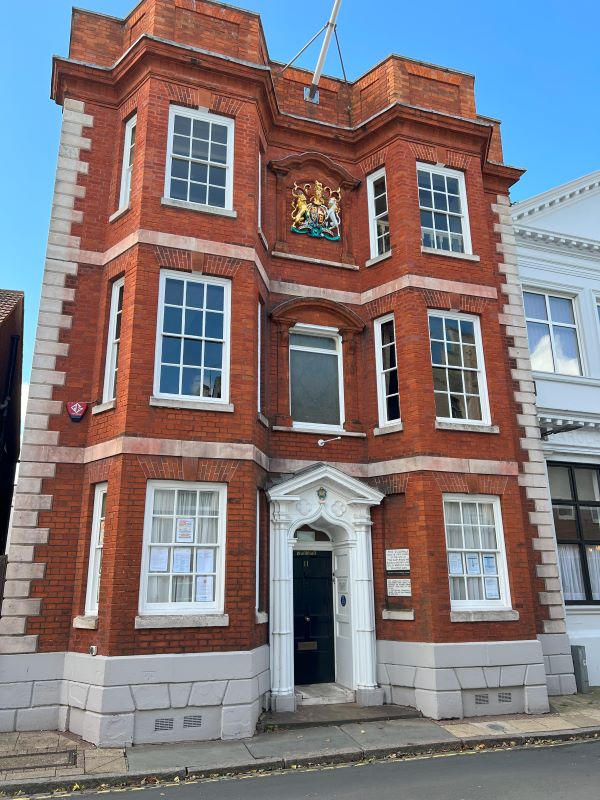
The Guildhall which is still used today by Harwich Town Council houses the original council regalia which includes the 17th century mace and mayor’s chain of office. By 1778 there was also a thriving fishing industry operating out of the port with at least 78 fishing vessels registered with the harbour master. Overall, our 18th century sources paint the picture of a prosperous town bustling with opportunity.
The Napoleonic wars brought the advancements in warfare, namely the Redoubt Fort which was constructed in 1808. The circular fort situated on the hilltop just outside the boundary of the Old Town gave an unrestricted line of sight across the Stour and Orwell, linking with the Landguard fort across the bay to protect the waterways. Then in 1811, Bath Side Battery was added to the Redoubt structure to upgrade its defences further. Now open as a museum, Harwich Redoubt is a fascinating treasure trove of original and replica firearms as well as the location of many battle reenactments put on for the visiting public.
Construction was the mark of the 19th century and Harwich boasts some exciting architecture worth a look. For example:
- The High Lighthouse (1818), built by General Rebow.
- The modern St Nicholas Church (1821).
- The Royal Harwich Yacht Club founded 1843 and patroned by those such as George V, George Vi and more recently Prince Philip, the late Duke of Edinburgh.
- The Ha’Penny Pier (1853)
- The Great Eastern Hotel (1864), later converted into Harwich Town Hall.
- Beacon Hill Battery (1889-1892), built in response to the threat of renewed French aggression and later put into service during World War 2.
The end of the Victorian era and the beginning of the 20th century were soon followed by two world wars and decades of fierce fighting across Europe and beyond. Harwich as an important naval base was a busy place in these years. Beacon Hill Battery monitored the North Sea and provided a strong line of defence against the German Navy.

At the end of the First World War several German U-Boats were moored at Harwich to be decommissioned. Then, in the inter-war period, the fort remained active and was continually modernised including pillboxes and the installation of Quick-Firing 6-pounder 10 cwt guns along the coastline. These were manned throughout the Second world war and a monitoring station for the minefield situated across the harbour entrance was operated out of Beacon Hill. After the defeat of Germany in 1945, Harwich’s defences remained until 1956 when they were eventually decommissioned by HM Government.
In 1969, The Harwich Society was founded to help preserve the ancient seaport town and bring its rich history into the public eye. Since its inception, Harwich has become a popular tourist attraction with excellent museums, restaurants, hotels, bars and an award-winning Blue Flag beach.
Halfpenny Pier in Harwich – Photos: GBC September 2024
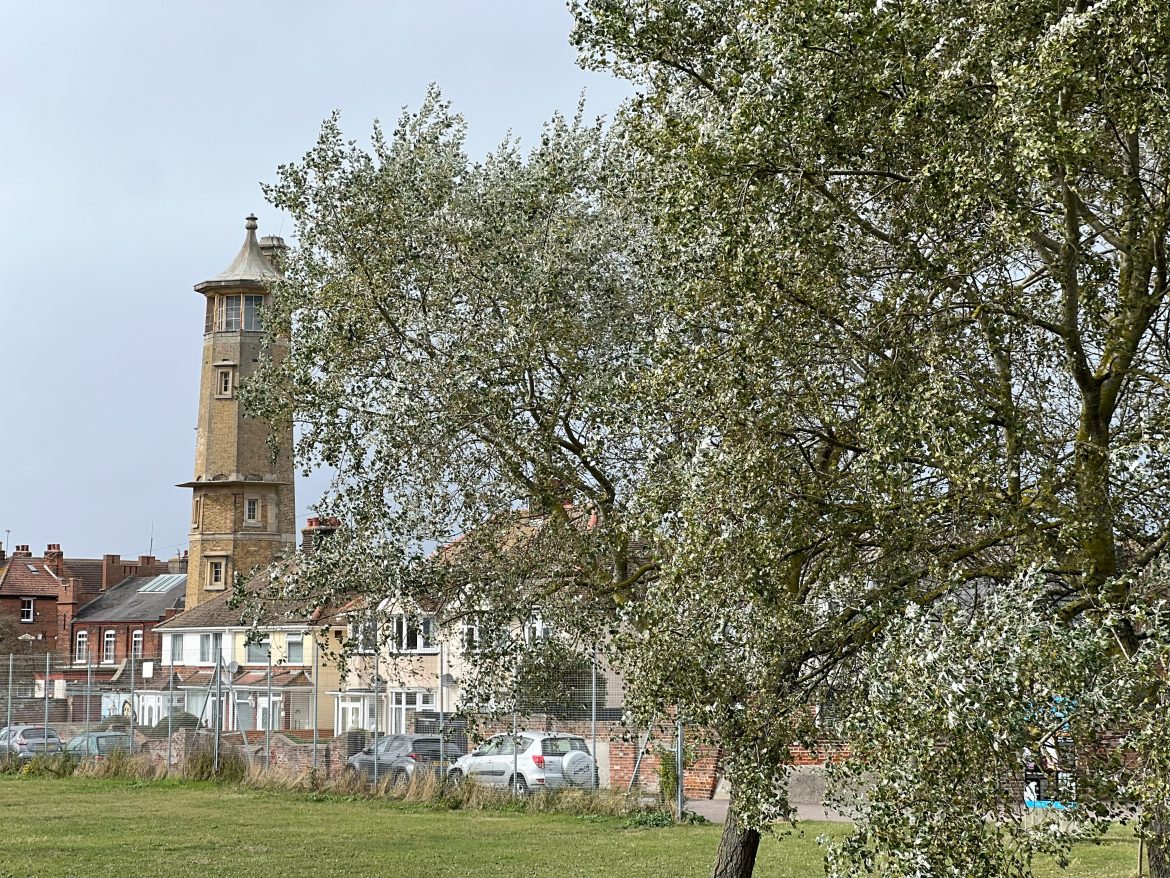
High Lighthouse in Harwich – Photo: GBC September 2024
Written by C. James McPherson MA MSc.

